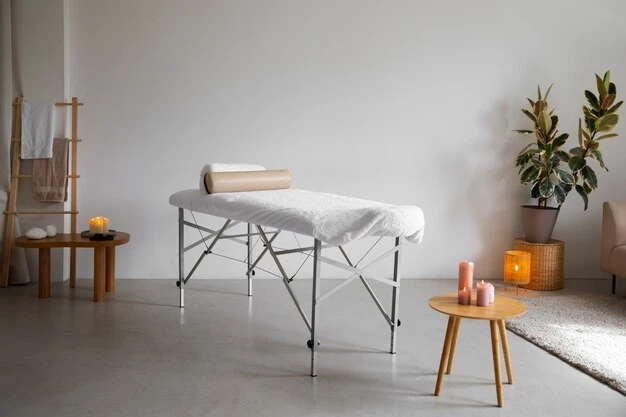Welcome to the ultimate guide to massage tables! Whether you're a professional massage therapist, a spa owner, or someone looking to bring the relaxation of a massage into your home, choosing the right massage table is crucial. In this comprehensive guide, we'll explore everything you need to know about massage tables, including their types, features, materials, and how to select the perfect one for your needs.
What is a Massage Table?
A massage table is a specialized piece of furniture designed for receiving massages. It typically consists of a padded surface, a sturdy frame, and adjustable legs. The primary purpose of a massage table is to provide a comfortable and supportive platform for clients to lie on during massage therapy sessions.
Types of Massage Tables:
Portable Massage Tables: These tables are lightweight and foldable, making them easy to transport from one location to another. They're ideal for mobile massage therapists or those with limited space.
Stationary Massage Tables: Stationary tables are more robust and are intended to remain in one location, such as a spa or massage therapy clinic. They often have additional features like storage shelves or built-in warming pads.
Electric Massage Tables: These tables come with electrically powered height and tilt adjustments, allowing therapists to customize the position of the table with ease. They're convenient for therapists who frequently adjust the table during sessions.
Key Features to Consider:
Padding: Look for tables with thick, high-density foam padding for maximum comfort and support. The upholstery should be durable and easy to clean.
Frame Material: Massage table frames are typically made of wood, aluminum, or steel. Each material has its advantages, with wood providing a classic look, aluminum being lightweight, and steel offering exceptional durability.
Adjustable Height: Adjustable height settings are essential for accommodating therapists of different heights and allowing clients to easily get on and off the table.
Weight Capacity: Check the weight capacity of the table to ensure it can safely support the weight of both the client and the therapist.
Portability: If you need to transport your massage table frequently, consider a portable model with features like a carrying case and lightweight construction.
Materials:
Massage tables can be upholstered in various materials, including PU leather, PVC vinyl, and genuine leather. PU leather and PVC vinyl are more affordable and easier to clean, while genuine leather offers a luxurious feel but requires more maintenance.
Choosing the Right Size:
The size of the massage table you choose will depend on factors such as the space available, the types of clients you'll be working with, and your personal preferences. Standard widths range from 28 to 32 inches, while lengths typically range from 70 to 84 inches.
Maintenance and Care:
To prolong the life of your massage table, it's essential to maintain it properly. Regularly clean the upholstery with a mild detergent and water, and disinfect the surface between clients. Avoid placing heavy objects on the table when not in use, and inspect the frame and hardware regularly for any signs of wear or damage.
Conclusion:
Investing in a high-quality massage table is essential for anyone involved in massage therapy. By considering factors such as portability, padding, frame material, and size, you can select the perfect table to meet your needs. Whether you're a professional therapist or someone who enjoys giving massages at home, a comfortable and supportive massage table is key to providing a relaxing and enjoyable experience for both you and your clients.


